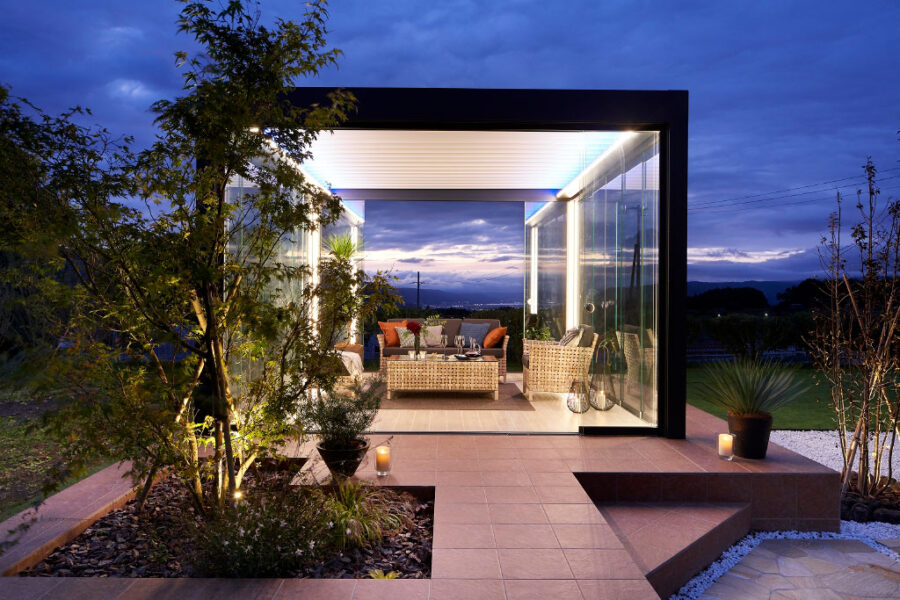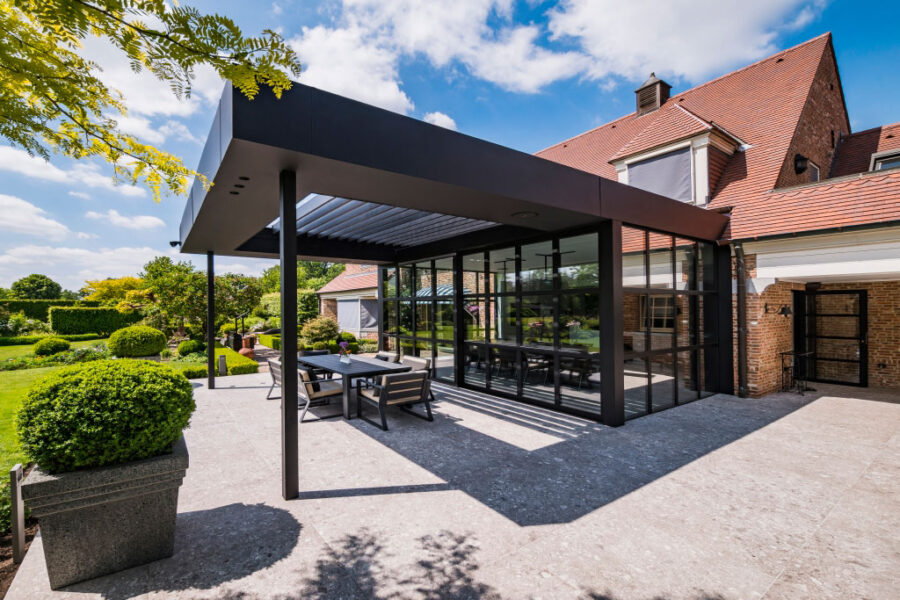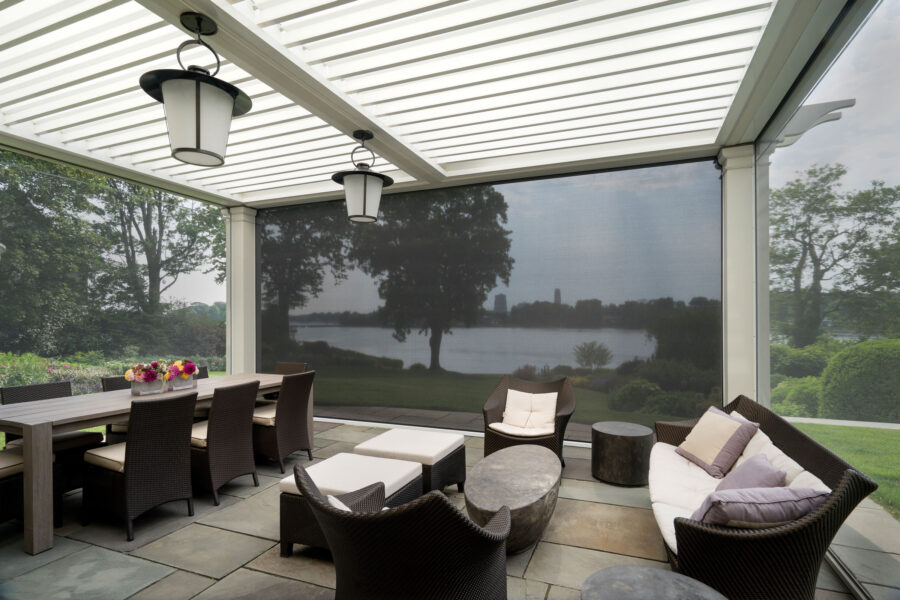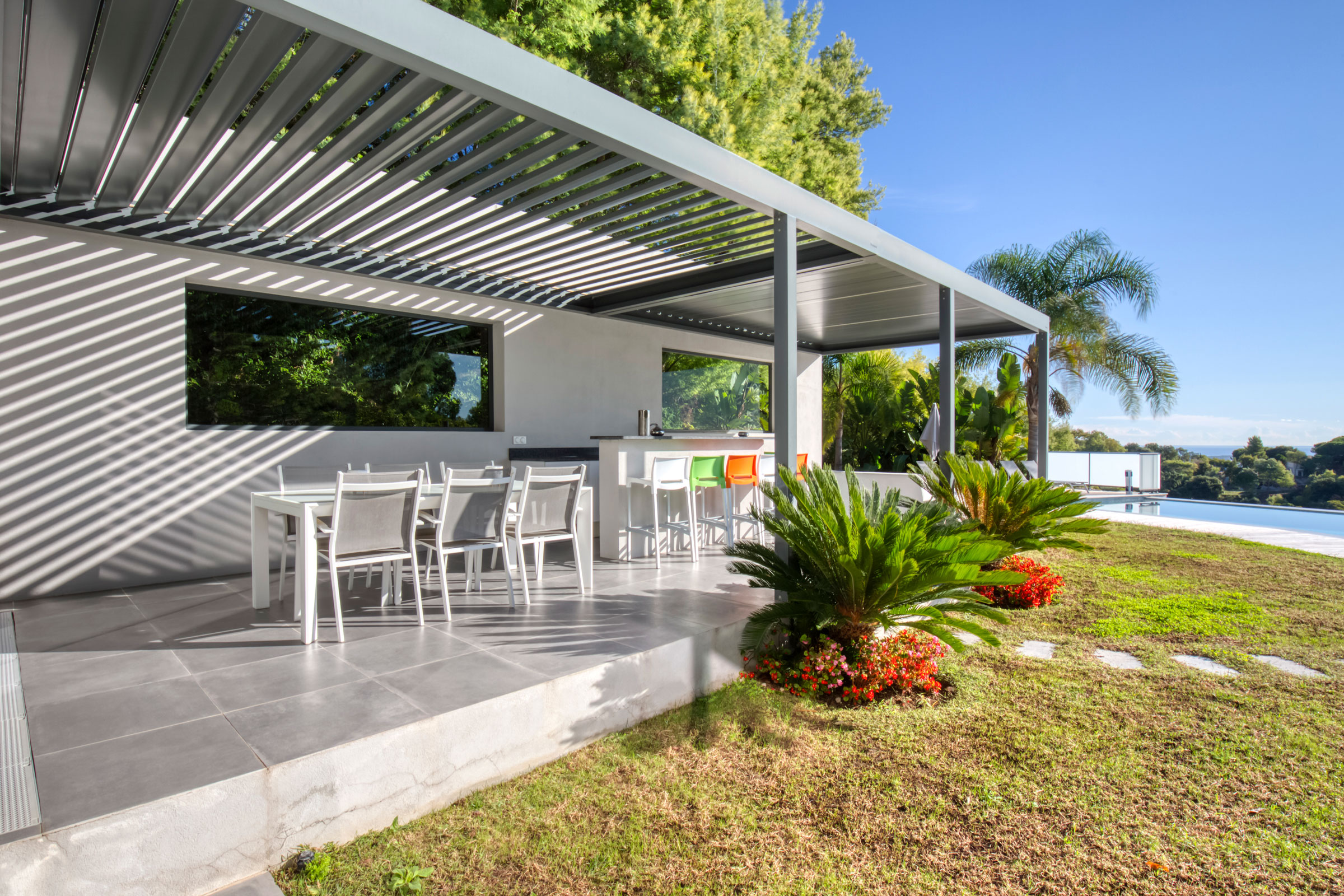Story at a glance:
- These are four modern outdoor living design questions every landscape architect should answer.
- Renson’s NOA outdoor living experience showcases how all aspects of outdoor living work together to create modern outdoor spaces.
- Climate, amenities, materials, and more must be taken into consideration in outdoor design.
As people spend more and more time outside, the role of outdoor spaces has shifted. Simple, momentary places where one could stop by to get a breath of fresh air are now expected to be flexible, multifunctional living spaces where people have the freedom to relax, work, entertain, and more.
For architects and designers, this transition means modern outdoor living design must emphasize the experience of being outdoors.
It’s why Renson, the Belgium-based outdoors, sun protection, and ventilation manufacturer, opened NOA—to highlight all of the variables that must come together to create outdoor living spaces that work for modern life.
Opened in October 2022 in Kruisem, Belgium, NOA brings together 30 outdoor manufacturers from across the industry, from pergolas to patios, furniture to lighting, outdoor kitchens to shading.
“NOA is like a little trip or exploration into outdoor living where people can walk through and interact with the products. It’s very inspiring,” says Max Sebrechts, US sales director at Renson. “You can breathe in the whole experience and see all the different brands and products and how they work with each other to make outdoor spaces unique.”
Renson is now preparing to open a second NOA outdoor living experience in Dallas, set to open in the near future. Ahead of its opening we asked the experts at Renson what the essential questions architects and designers must answer are when designing modern, luxury outdoor living spaces. Here are five key questions to consider.
1. How can I design a modern outdoor living space to emphasize nature?

Photo courtesy of Renson
The whole purpose of outdoor living is to provide a space to breathe in fresh air and soak up the environment around you. As such, successful outdoor spaces celebrate the landscape in both design and materials.
“If you’re going to put outdoor structures in, it’s about creating spaces that aren’t going to be temporary,” says Renson Marketing Manager Andrea Zaghi-Ganter. “The whole purpose is to become a fixture of the landscape.”
Incorporating sustainable, durable materials like aluminum can help minimize the risk of replacement culture, where you install “an inferior good that then breaks down over time and will need to be replaced.”
“Instead of putting in something that is built to be replaced, we need to build things that will allow people and their families to enjoy their outdoor space for a much longer period of time without having to replace it, and, as a result, create more waste,” Zaghi-Ganter says.
2. What does a modern outdoor living space need to be utilized year-round?

The Renson Aero is an integrable pergola with slatted roof that fit into existing or new constructions. Photo courtesy of Renson
The short answer: choice and control. Year-round outdoor living spaces need to be flexible, where occupants can adjust and manage the space easily as its use and weather conditions change.
“If the goal is to allow people to enjoy their space year-round, you need to offer them the power of choice within that space,” Zaghi-Ganter says. “While the weather continues to change and gets more extreme and unpredictable, the human necessities don’t. Controlling how much of the weather you experience is more feasible than controlling the weather or just staying out of it. So, modern outdoor living design must give people the experience of being outside but getting to decide home much of the outside gets in.”
That’s where outdoor structures like pergolas come in. With a pergola, people can experience the comfort of the indoors surrounded by nature. Enhancements such as louvered roofs, loggia doors, automated shading, and integrated heating, lighting, and speakers offer the experience of the outdoors in a controlled environment.
“You can achieve 100% control of your space,” Zaghi-Ganter says. “If you’re going to work from home, bring your kids outside, eat lunch outside with your family, it’s going to make it easier because you can be out in the winter or summer, and you’re not going to have to think about it. You’re just going to have access to your space.”
3. How does weather impact the outdoor space?

Photo courtesy of Renson
Historically, the weather has dedicated how an outdoor space can be used and when. Modern outdoor design will depend on climate and location. In places like Florida, for instance, hurricanes pose a huge threat to homes and buildings, and shading is essential to minimize the impact of consistent sunlight. The durability and stability of building materials are essential to stand up to whatever Mother Nature may throw a building’s way.
One signal to a strong outdoor material is Miami-Dade certification. Miami-Dade County in Florida is at the forefront of developing rigorous building codes and regulations to ensure building resiliency. Products that have achieved Miami-Dade certification can withstand hurricane wind loads up to Category 5, which means standing strong against wind power speeds of 157 miles per hour or more.
This type of strength helps ensure longevity, and therefore the sustainability, of outdoor spaces. In fact, the first installed Renson Camargue aluminum pergola, which is Miami-Dade certified, still stands today, more than 10 years later.
4. How can you create a comfortable outdoor experience in the sun?

The Camargue Skye pergola has a fully retractable roof. Photo courtesy of Renson
Research shows that access to natural light can boost your mood, lower the risk of depression, improve sleep, and more. And while sunlight is a crucial part of any outdoor space, too much can be harmful to one’s health and uncomfortable.
Modern outdoor living spaces must offer a healthy balance with flexible shading systems that adapt as the sun moves throughout the sky. Solutions such as louvered roofs, where occupants can adjust the openness of the louvers throughout the day, and automated exterior shades offer relief from the sun’s direct rays and add comfort and control to outdoor spaces.
“At Renson, our whole company positioning is about allowing people to be in outdoor spaces and experience nature but being able to control that experience without being uncomfortable,” Zaghi-Ganter says. “Everything we do is about how to return to nature and continue modern life in those outdoor spaces.”



